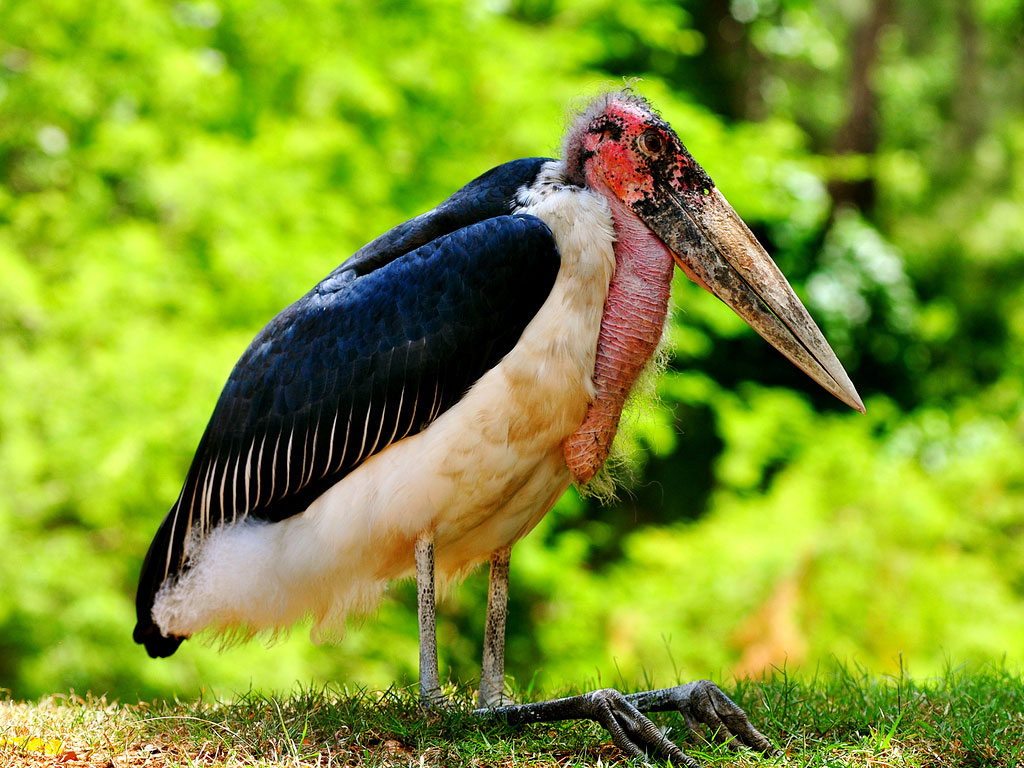- Home
- Conservancy
- Marabou stork
Description
The marabou stork is a massive bird: large specimens are thought to reach a height of 152 cm (60 in) and a weight of 9 kg (20 lb). A wingspan of 3.7 m (12 ft) was accepted by Fisher and Peterson, who ranked the species as having the largest wing-spread of any living bird. Even higher measurements of up to 4.06 m (13.3 ft) have been reported, although no measurement over 3.19 m (10.5 ft) has been verified. It is often credited with the largest spread of any landbird, to rival the Andean condor; more typically, however, these storks measure 225
Fun Facts
Like most storks, the marabou is gregarious and a colonial breeder. In the African dry season (when food is more readily available as the pools shrink) it builds a tree nest in which two or three eggs are laid. It is known to be quite ill-tempered. It also resembles other storks in that it is not very vocal, but indulges in bill-rattling courtship displays.
The throat sac is also used to make various noises at that time. A number of endoparasites have been identified in wild marabous including Cheilospirura, Echinura and Acuaria nematodes, Amoebotaenia sphenoides (Cestoda) and Dicrocoelium hospes (Trematoda). Feeding behavior The marabou stork is a frequent scavenger, and the naked head and neck are adaptations to this livelihood, as it is with the vultures with which the stork often feeds. In both cases, a feathered head would become rapidly clotted with blood and other substances when the bird's head was inside a large corpse, and the bare head is easier to keep clean.
This large and powerful bird eats mainly carrion, scraps and faeces but will opportunistically eat almost any animal matter it can swallow. It occasionally eats other birds including quelea nestlings, pigeons, doves, pelican and cormorant chicks, and even flamingos. During the breeding season, adults scale back on carrion and take mostly small, live prey since nestlings need this kind of food to survive. Common prey at this time may consist of fish, frogs, insects, eggs, small mammals and reptiles such as crocodile hatchlings and eggs.
Though known to eat putrid and seemingly inedible foods, these storks may sometimes wash food in water to remove soil. When feeding on carrion, marabou frequently follow vultures, which are better equipped with hooked bills for tearing through carrion meat and may wait for the vultures to cast aside a piece, steal a piece of meat directly from the vulture or wait until the vultures are done. As with vultures, marabou storks perform an important natural function by cleaning areas via their ingestion of carrion and waste.
Increasingly, marabous have become dependent on human garbage and hundreds of the huge birds can be found around African dumps or waiting for a hand out in urban areas. Marabous eating human garbage have been seen to devour virtually anything that they can swallow, including shoes and pieces of metal. Marabous conditioned to eating from human sources have been known to lash out when refused food.

